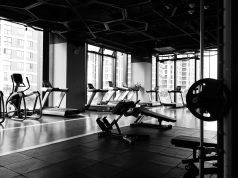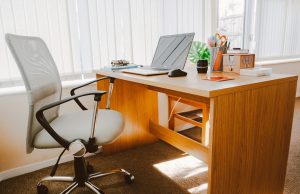Do you get pesky breakouts on the same parts of your face that just won’t go away?
For years, we’ve been told that the location of our acne can reveal underlying health conditions, but this has been debunked by skincare specialists in recent years because of little scientific evidence. However, there are things that can trigger spots on certain parts of your face.
Here, we take a look at the areas of spots on your face, the most likely cause of them, and how you can keep them at bay.
Spots on the chin can reflect hormonal changes
Face mapping, the ancient Chinese and Ayurvedic technique that linked spots with your organs, is no longer seen as a recognised technique because there’s not a lot of scientific evidence to support it. That being said, face mapping did get one area right – acne on your jawline and chin can be caused by hormones.
According to an academic study on acne, hormones cause blemishes to appear in a concentrated area – the lower third of the face, which covers the chin and jawline. Androgens and progesterone are the two main culprits when it comes to acne-causing hormones. Androgens stimulate sebum production, which can lead to clogged pores. These clogged pores then become blackheads, whiteheads, or pustules, depending on whether the pore is open or closed and how much sebum has been produced.
Hormonal fluctuations mean that teenagers and women are more susceptible to chin acne. But that doesn’t mean you can’t prevent it!
How to prevent chin acne
Skincare ingredients that fight spot-causing oil and bacteria will be your friend here. Salicylic acid is a powerhouse at getting into pores and breaking up the debris in them. In fact, because it’s fat-soluble, it’s one of the few ingredients that actually penetrates your pores.
Benzoyl peroxide is also a great ingredient to have in your arsenal when fighting hormonal acne. It has antiseptic properties that slay germs and bacteria on your face. This can reduce acne by eliminating those nasties that cause it.
Put down the phone to prevent cheek acne
Traditional face mapping would tell you that sugar is the culprit of cheek acne. But while there’s evidence that sugar affects the collagen in your skin, which can cause signs of ageing, there’s no proof that it causes acne. Instead, look to your phone, pillowcase, and anything else that regularly touches your face for the real cause.
If you talk on the phone a lot but you don’t clean your screen regularly, your smartphone can transfer bacteria to the face (and you don’t want to know what kind of bacteria is lurking on your screen). Then, you’ve guessed it, these bacteria gets into your pores and causes that pesky acne you’ve been struggling with. Equally, not washing your pillowcase frequently enough can lead to the same issue.
How to prevent cheek acne
Keeping your phone screen clean and regularly washing your pillowcases will help to lessen acne on your cheeks. Use disinfectant wipes to clean your phone screen regularly; an Insurance2go survey found that over a third of us have never cleaned our phones – yuck! If you’re in a job that requires you to be on the phone a lot, it might be worth requesting or investing in a headset that doesn’t touch your face.
Silk pillowcases have grown in popularity on Instagram and TikTok, with many influencers citing their antibacterial properties. And while they do are antibacterial at a tiny scale, there’s not enough evidence on this. However, a material with more slip than cotton, such as silk, satin, or more affordable sateen, might limit acne aggravation when you’re asleep because there’s less friction that causes skin irritation. Washing your pillowcases regularly is the best method to help with cheek acne prevention.
Forehead acne could be caused by haircare products
In the past, acne on the forehead and hairline was associated with digestive issues and stress. And while we know stress can make acne worse, it isn’t a root cause of blemishes and can’t be linked specifically to forehead acne.
Instead, if you’re finding spots cropping up on your forehead, it could be your hair and beauty products causing them. If you use a lot of hairspray, you could unwittingly be getting it on your forehead. Products that are designed for your hair shouldn’t be getting onto your face – hairspray, gels, waxes, and even shampoos and conditioners can clog the pores on our foreheads and cause spots and texture.
Many of us might also not be cleansing our foreheads as effectively as we think. If you’re washing your face but not your hair, you might be avoiding your hairline. This means make-up, products like self-tan, and haircare could be causing spots there.
How to prevent forehead acne
When you’re applying products to your hair, take extra care to not get them on your face. If you do this and you’re still finding blemishes on your forehead, take a short break from your hair styling products to see if this makes a difference.
Cleansing your face thoroughly is also important. Work your cleanser up to your hairline and massage for at least a minute to dislodge dirt, make-up, and debris. Double cleansing with an oil or balm cleanser is also effective at removing make-up and beauty products before a water-based cleanser.
If you’re still experiencing acne after implementing these cleansing methods and you use products like self-tan, it might be time to consider switching to products that don’t clog your pores. Modern tan drops come in a colourless formula and can be mixed with your moisturiser, eliminating the pore-clogging elements of traditional tanners.
Gone are the days of worrying about our overall health because of a few blemishes on our forehead. We’re armed with more skincare knowledge than ever before, and now we know that acne can be caused by both internal and external factors – but internally, it’s most likely down to our hormones. Hopefully, this will help you to tackle the stubborn spots that never quite seem to go away from your cheeks, chin, or forehead!
Sources
https://www.refinery29.com/en-gb/face-mapping-acne
https://www.ncbi.nlm.nih.gov/pmc/articles/PMC5015761/
https://www.nhs.uk/medicines/benzoyl-peroxide/
https://pubmed.ncbi.nlm.nih.gov/20620757/
https://www.nytimes.com/wirecutter/blog/are-silk-pillowcases-really-better-for-your-skin/
https://www.webmd.com/skin-problems-and-treatments/acne/features/stress-and-acne
https://www.healthline.com/health/beauty-skin-care/pimple-acne-face-map















